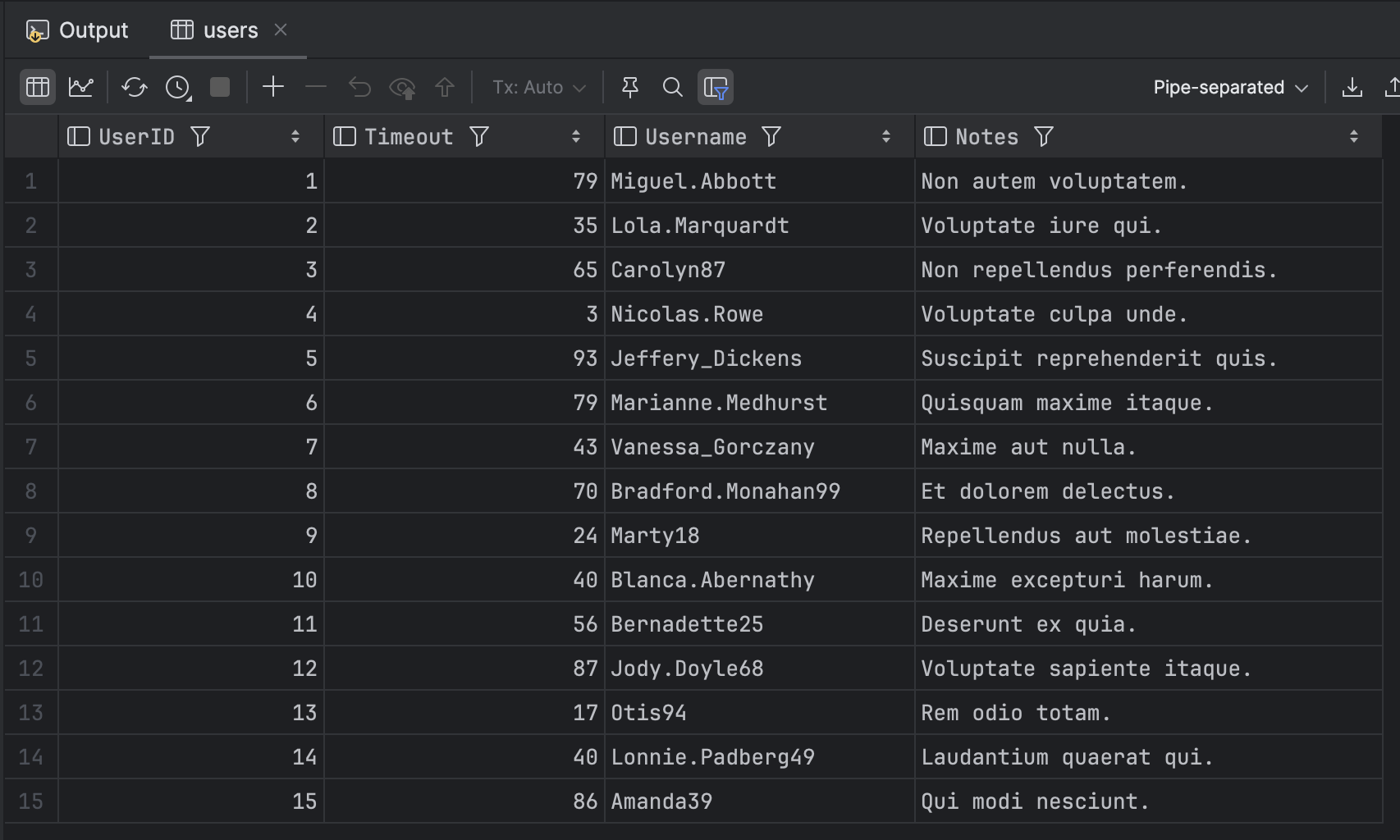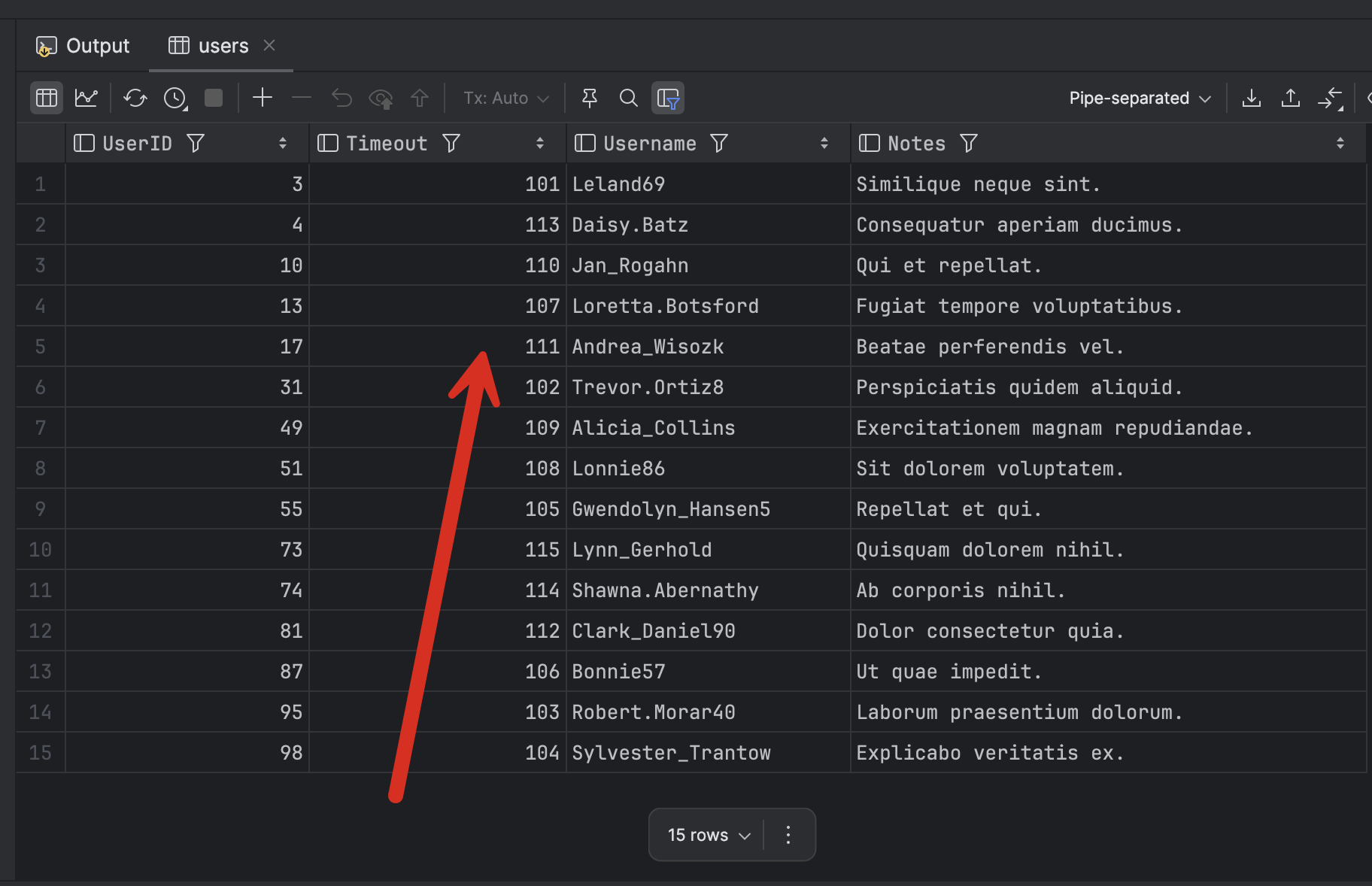Beware - Order Of DataTable Column Definitions Matters For User Defined Table Type Mapping
[SQL Server, C#, NET]
I ran into an interesting issue recently that might trip you up.
This is when you use user-defined table types, as outlined in a previous post.
Assume we have the following table:
CREATE TABLE Users
(
UserID INT PRIMARY KEY NOT NULL,
Timeout INT NOT NULL,
Username NVARCHAR(50) NOT NULL,
Notes NVARCHAR(1000) NOT NULL
)
We then have the following user-defined table type
CREATE TYPE dbo.UserType AS TABLE
(
UserID INT NOT NULL,
Timeout INT NOT NULL,
Username NVARCHAR(50) NOT NULL,
Notes NVARCHAR(1000) NOT NULL
);
GO
And we have the following procedure that, for our own reasons, we want to use to insert multiple users.
CREATE PROC [Users.Insert] @Users UserType READONLY
AS
BEGIN
INSERT dbo.Users
(
UserID,
Timeout,
Username,
Notes
)
SELECT
[@Users].UserID,
[@Users].Timeout,
[@Users].Username,
[@Users].Notes
FROM
@Users;
END;
Let us then create a type for our use.
public record User
{
public int UserID { get; set; }
public int Timeout { get; set; }
public string Username { get; set; }
public string Notes { get; set; }
}
We then have the following endpoint to invoke this operation.
app.MapGet("/Insert", async (SqlConnection cn) =>
{
// Create a data table for mapping
var dt = new DataTable();
dt.Columns.Add("UserID", typeof(int));
dt.Columns.Add("Timeout", typeof(int));
dt.Columns.Add("Username", typeof(string));
dt.Columns.Add("Notes", typeof(string));
// Create our faker
// Initialize a counter
var counter = 0;
var faker = new Faker<User>()
// Auto number the user id from 0
.RuleFor(u => u.UserID, f => ++counter)
// Set the timout to be a random number between 0 and 100
.RuleFor(u => u.Timeout, f => f.Random.Int(0, 100))
// Generate a realistic user name
.RuleFor(u => u.Username, f => f.Person.UserName)
// Generate lorem notes
.RuleFor(u => u.Notes, f => f.Lorem.Sentence(3));
// Generate 15 users
var users = faker.Generate(15);
// Add to our datatable
foreach (var user in users)
{
var row = dt.NewRow();
row["UserID"] = user.UserID;
row["Timeout"] = user.Timeout;
row["Username"] = user.Username;
row["Notes"] = user.Notes;
dt.Rows.Add(row);
}
// Setup dapper
var param = new DynamicParameters();
param.Add("Users", dt.AsTableValuedParameter());
await cn.ExecuteAsync("[Users.Insert]", param);
return Results.Ok();
});
If we run this endpoint, we can see the following in the database:

So far, so good.
Now, let us clone the existing end point and make two changes:
- Start the
UserIDnumbering from 100 - Change the order of the
DataTablesetup - here, we reverse the order of UserID and Timeout.
app.MapGet("/InsertBug", async (SqlConnection cn) =>
{
// Create a data table for mapping, swapping the order
var dt = new DataTable();
dt.Columns.Add("Timeout", typeof(int));
dt.Columns.Add("UserID", typeof(int));
dt.Columns.Add("Username", typeof(string));
dt.Columns.Add("Notes", typeof(string));
// Create our faker
// Initialize a counter from 100
var counter = 100;
var faker = new Faker<User>()
// Auto number the user id from 0
.RuleFor(u => u.UserID, f => ++counter)
// Set the timeout to be a random number between 0 and 100
.RuleFor(u => u.Timeout, f => f.Random.Int(0, 100))
// Generate a realistic user name
.RuleFor(u => u.Username, f => f.Person.UserName)
// Generate lorem notes
.RuleFor(u => u.Notes, f => f.Lorem.Sentence(3));
// Generate 15 users
var users = faker.Generate(15);
// Add to our datatable
foreach (var user in users)
{
var row = dt.NewRow();
row["UserID"] = user.UserID;
row["Timeout"] = user.Timeout;
row["Username"] = user.Username;
row["Notes"] = user.Notes;
dt.Rows.Add(row);
}
// Setup dapper
var param = new DynamicParameters();
param.Add("Users", dt.AsTableValuedParameter());
await cn.ExecuteAsync("[Users.Insert]", param);
return Results.Ok();
});
Before we run this endpoint, let us delete the existing users.
DELETE FROM Users
If we now run this endpoint, the database will look something like this.

If you look closely, you will see that the Timeouts are sequential from 100, which we had configured for our UserID!
The long and short of it is that you must define the data table columns in the same order as they are when defining the user-defined table type. If you don’t when the parameter gets to the database, SQL Server will not use your column names to match - it will use their order.
TLDR
Columns for data tables that map data to user-defined table types must be defined in the same order as they are on the type.
The code is in my GitHub.
Happy hacking!